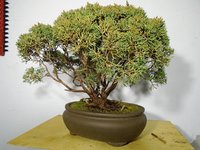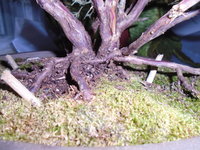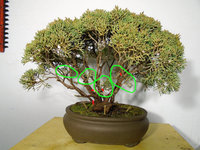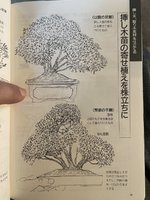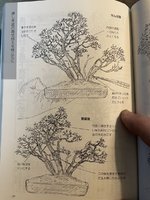gjones_42
Yamadori
This'll be a long detailed post, so feel free to bail now or skip to post 2 where the design questions are 
Some background: Was gifted this clump style shimpaku late last year and it was a great push into the Bonsai deep end. I've invested the dormant winter months to learn like a madman, and after reading a ton/watching SO many online videos and I think I have as good of an understanding of the horticulture aspects of Bonsai practice as I can have without actually working on any trees... needless to say I can't wait for spring to finally arrive!
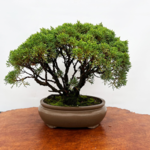
What I've done: Since getting the tree, I've spent a good amount of time cleaning up the trunks... mostly removing moss and gently removing the flaky bark (can't believe I am still not done with this...) as shown below . This has been a great chance to get familiar with this specimen and reflect on it. I've come to the conclusion that I really dislike this design, and want to change it. To me, this looks like a small bush/hedge, not a small tree as it should. Someone put a TON of effort into refining this (the ramification is great) and then it looks like someone gave it a bowl cut... there's almost no differentiation in height or depth and this has been bugging me. The bowl cut also hides some of the great ramification that exists now, even though I think this will have to be redeveloped later if I want to introduce more height and thickness...
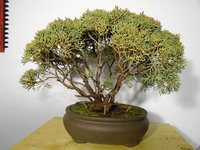
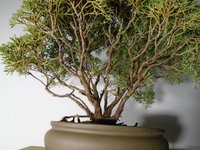
What's next: I really want to introduce variety to this piece with different heights and different depth. To do this, I'll need to grow out the main trunks and then re-develop the finer ramification. There is a lot to work with here, and I am hoping folks can share their ideas and input (the rationale is also appreciated since I am a novice). I think some of the redesign work will dovetail nicely with the spring clean up to rebalance the tree and encourage the new form. Post 2 has more specific design info...
Some background: Was gifted this clump style shimpaku late last year and it was a great push into the Bonsai deep end. I've invested the dormant winter months to learn like a madman, and after reading a ton/watching SO many online videos and I think I have as good of an understanding of the horticulture aspects of Bonsai practice as I can have without actually working on any trees... needless to say I can't wait for spring to finally arrive!

What I've done: Since getting the tree, I've spent a good amount of time cleaning up the trunks... mostly removing moss and gently removing the flaky bark (can't believe I am still not done with this...) as shown below . This has been a great chance to get familiar with this specimen and reflect on it. I've come to the conclusion that I really dislike this design, and want to change it. To me, this looks like a small bush/hedge, not a small tree as it should. Someone put a TON of effort into refining this (the ramification is great) and then it looks like someone gave it a bowl cut... there's almost no differentiation in height or depth and this has been bugging me. The bowl cut also hides some of the great ramification that exists now, even though I think this will have to be redeveloped later if I want to introduce more height and thickness...


What's next: I really want to introduce variety to this piece with different heights and different depth. To do this, I'll need to grow out the main trunks and then re-develop the finer ramification. There is a lot to work with here, and I am hoping folks can share their ideas and input (the rationale is also appreciated since I am a novice). I think some of the redesign work will dovetail nicely with the spring clean up to rebalance the tree and encourage the new form. Post 2 has more specific design info...



